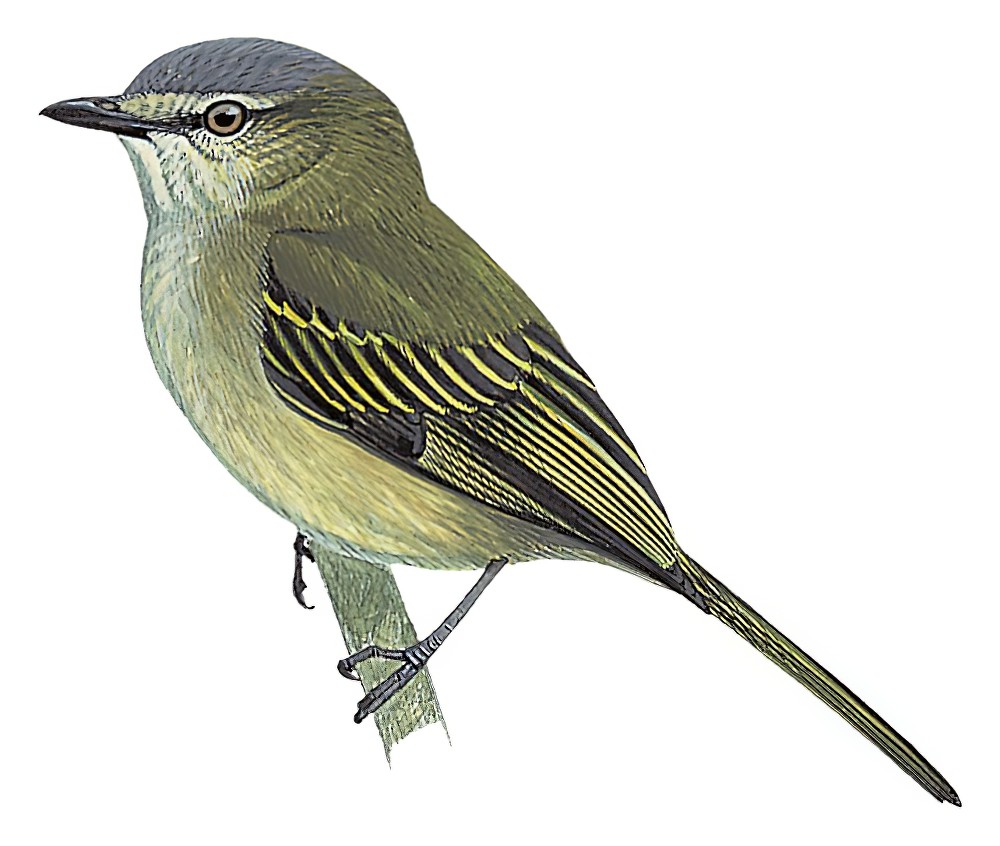Mistletoe Tyrannulet / Zimmerius parvus

Mistletoe Tyrannulet
SCI Name:
Protonym: Tyranniscus parvus Ibis p.12
Taxonomy: Passeriformes / Tyrannidae / Zimmerius
Taxonomy Code: paltyr3
Type Locality: Isthmus of Panama; the two cotypes are presumably from Lion Hill, Canal Zone.
Author: Lawrence
Publish Year: 1862
IUCN Status: Least Concern
DEFINITIONS
ZIMMERIUS
(Tyrannidae; Ϯ Golden-faced Tyrannulet Z. chrysops) Dr John Todd Zimmer (1889-1957) US ornithologist, taxonomist; "Despite the superficial similarity, I believe the group of Tyranniscus species with the unique wing pattern, syrinx and aberrant nasal septum, should be separated generically from the typical group of species. Surprisingly, there is no name available, so I propose: Zimmerius gen. nov., type Tyrannulus chrysops Sclater, 1858. Diagnosis. Superficially most like Tyranniscus Cabanis and Heine, 1859, but differs as follows: has a unique wing pattern in which the median and greater coverts, the secondaries and four or five subexternal primaries are edged with yellow, while the outermost and four or five internal primaries are blackish, producing a black wedge when the wing is spread; tail proportionately longer, greater than 80 per cent of wing length instead of less than 80 per cent, and bill proportionately longer, greater than 18 per cent of wing length: tarsus basically exaspidean with a few scutes on the proximal half of the plantar surface, compared to taxaspidean/pycnaspidean in Tyranniscus; syrinx unlike any other in the Elaeniiinae, lacking intrinsic muscles ... The species included in Zimmerius, all formerly in Tyranniscus, are bolivianus, vilissimus, cinereicapillus, gracilipes and viridiflavus (including chrysops). The genus is named for the late John Todd Zimmer in belated recognition of his enormous contributions to the systematics of Neotropical birds and his recognition of the unique wing pattern in this new genus." (Traylor 1977); "Zimmerius Traylor, 1977, Bull. Mus. Comp. Zool., 148, p. 147. Type, by original designation, Tyrannulus chrysops Sclater." (Traylor in Peters, 1979, VIII, p. 8).
parvus
L. parvus small, little, short.
● ex “Barbu du Sénégal” of d’Aubenton 1765-1781, pl. 746, fig. 2, “Petit Barbu” of de Buffon 1770-1786, and “Little Barbet” of Latham 1782 (syn. Gymnobucco calvus).
PARUS
(Paridae; Ϯ Great Tit P. major) Late L. parus tit, titmouse; a rare word, found only in Carmen de Philomela, by an unknown author (c. 500AD); "100. PARUS. Rostrum integerrimum. Lingua truncata, setis terminata." (Linnaeus 1758); "Parus Linnaeus, 1758, Syst. Nat., ed. 10, p. 189. Type, by subsequent designation (Gray, 1840, List Gen. Birds, ed. 1, p. 23), Parus major Linnaeus." (Snow in Peters 1967, XII, 70). Linnaeus's Parus comprised twelve species (P. cristatus, P. major, P. americanus, P. cæruleus, P. ater, P. palustris, P. caudatus, P. biarmicus, P. Pipra, P. erythrocephalus, P. Aureola, P. Cela).
Var. Para, Patus, Parvus.
Synon. Parulus.
UPPERCASE: current genus
Uppercase first letter: generic synonym
● and ● See: generic homonyms
lowercase: species and subspecies
●: early names, variants, mispellings
‡: extinct
†: type species
Gr.: ancient Greek
L.: Latin
<: derived from
syn: synonym of
/: separates historical and modern geographic names
ex: based on
TL: type locality
OD: original diagnosis (genus) or original description (species)












